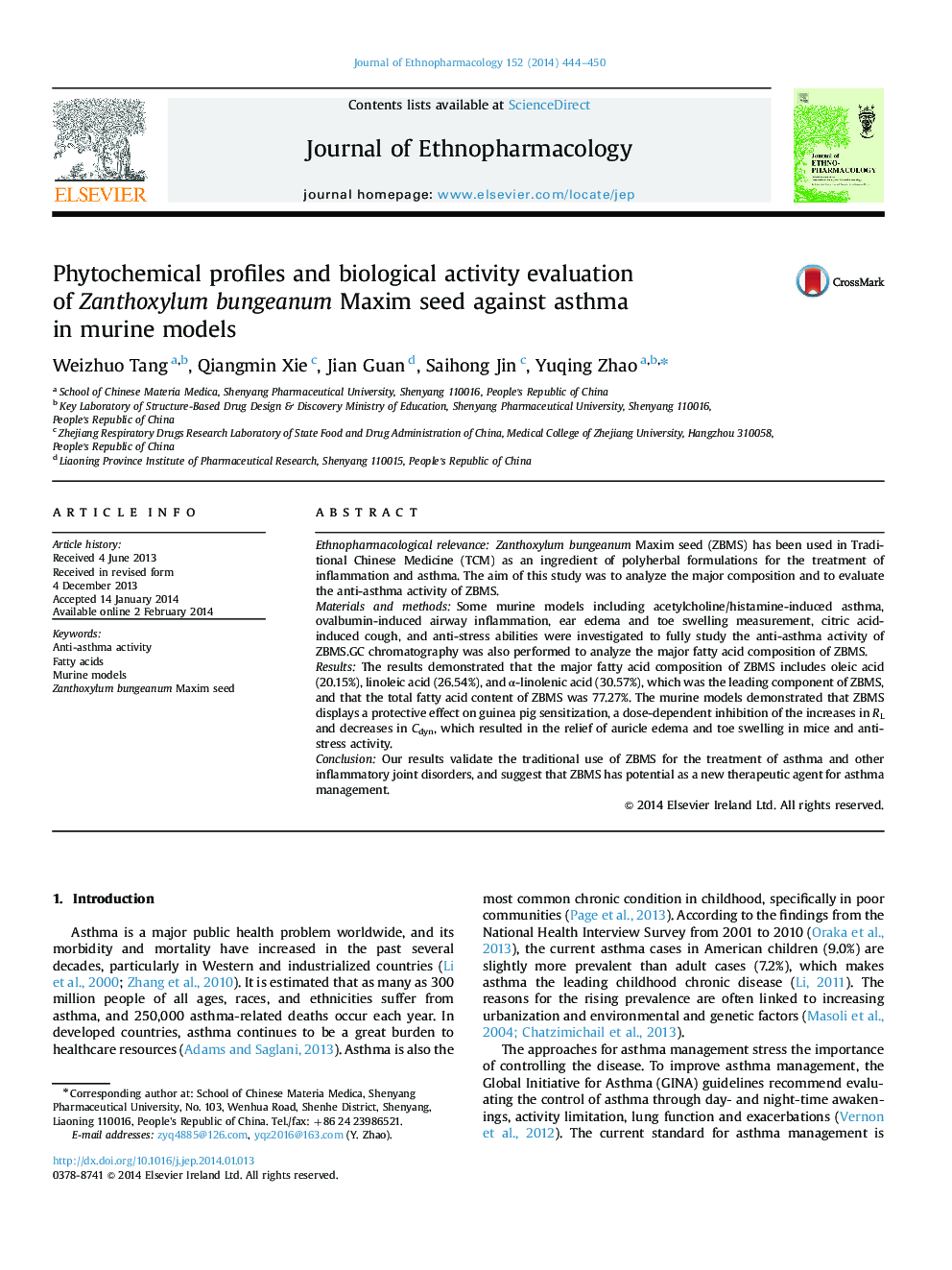| Article ID | Journal | Published Year | Pages | File Type |
|---|---|---|---|---|
| 2545402 | Journal of Ethnopharmacology | 2014 | 7 Pages |
Ethnopharmacological relevanceZanthoxylum bungeanum Maxim seed (ZBMS) has been used in Traditional Chinese Medicine (TCM) as an ingredient of polyherbal formulations for the treatment of inflammation and asthma. The aim of this study was to analyze the major composition and to evaluate the anti-asthma activity of ZBMS.Materials and methodsSome murine models including acetylcholine/histamine-induced asthma, ovalbumin-induced airway inflammation, ear edema and toe swelling measurement, citric acid-induced cough, and anti-stress abilities were investigated to fully study the anti-asthma activity of ZBMS.GC chromatography was also performed to analyze the major fatty acid composition of ZBMS.ResultsThe results demonstrated that the major fatty acid composition of ZBMS includes oleic acid (20.15%), linoleic acid (26.54%), and α-linolenic acid (30.57%), which was the leading component of ZBMS, and that the total fatty acid content of ZBMS was 77.27%. The murine models demonstrated that ZBMS displays a protective effect on guinea pig sensitization, a dose-dependent inhibition of the increases in RL and decreases in Cdyn, which resulted in the relief of auricle edema and toe swelling in mice and anti-stress activity.ConclusionOur results validate the traditional use of ZBMS for the treatment of asthma and other inflammatory joint disorders, and suggest that ZBMS has potential as a new therapeutic agent for asthma management.
Graphical abstractFigure optionsDownload full-size imageDownload high-quality image (315 K)Download as PowerPoint slide
